Once available only to priests and nobility, today chocolate is prized around the world for its taste and seductive effects—qualities that have been appreciated for centuries.
Our word for chocolate comes from the Nahuatl chocolatl meaning “bitter water,” but theobroma, cacao’s botanical name, is Latin for “food of the gods.” Native to Mesoamerica, cacao was one of its most sacred natural staples, second only to maize. In Mayan cosmology, trees were a metaphor for spiritual transcendence, and Mayans believed the first tree that ever grew was a cacao tree. Its fruit was worshipped as a literal gift from the heavens.
Although the earliest recorded reference to cacao dates to the Olmec culture around 2000 B.C., it was the Mayans who first invented the use of chocolate as a hot, bitter, frothy beverage prepared with meticulous care. After a careful fermentation and drying process, ripe cacao beans were roasted and ground with spices in a metate, one of the oldest domestic tools in the Americas. A metate is a rectangular slab carved from volcanic stone used for processing cacao beans, as well as corn; it was used by women kneeling on the floor and rocking a rolling pin-shaped stone called a mano back and forth to form a powder. This powder was then mixed with flavorings including chiles, vanilla beans, and sometimes a little honey, and then made into a paste.

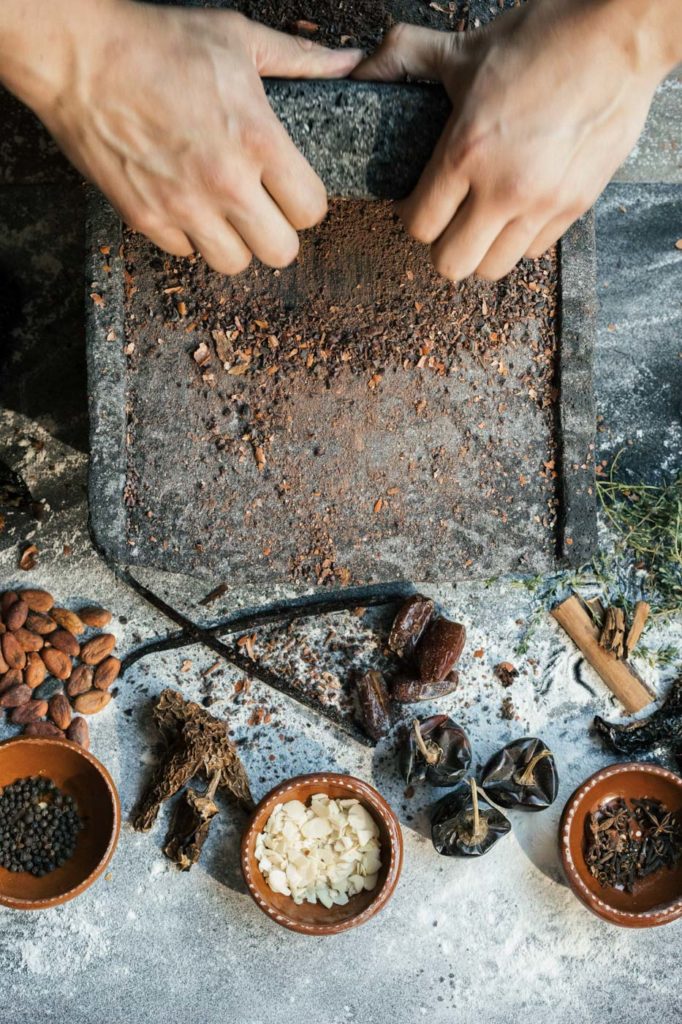
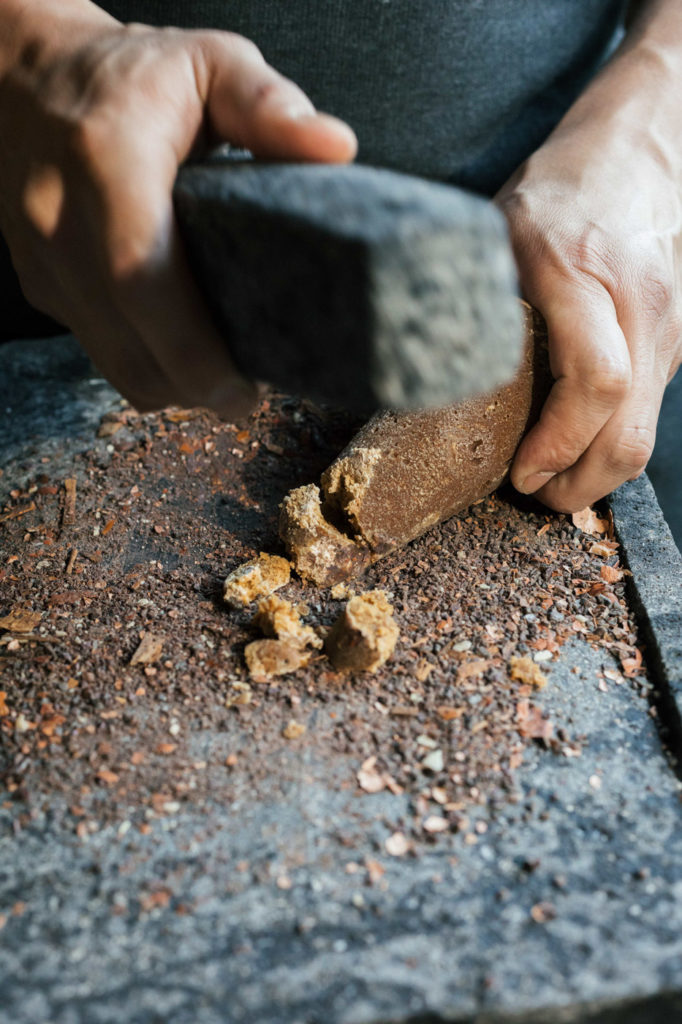
This rich paste served as the basis of the water-based hot drink, which was then poured repeatedly from one terracotta vessel into another in order to form froth, an essential part of the drinking experience. Froth was thought to embody the spiritual essence of the chocolate and connect the drinker to the gods. It was also associated with fertility and was thought to have curing properties. The drink was used in rituals, religious ceremonies, and healings. So valuable was cacao that Mayan dignitaries were buried with fine ceramic jars and bowls of chocolate for use in the afterlife.
Imbued with religious meaning, the foamy beverage made its way to Aztec culture where it was considered a great delicacy. Hot chocolate was reserved for nobles who drank it at banquets and during special occasions, including lovemaking (Emperor Moctezuma is said to have drank fifty cups of chocolate a day to enhance his sexual performance). The Aztecs also used cacao medicinally to cure coughs and muscle pain.
Just owning the utensils associated with preparing and drinking chocolate once symbolized wealth and social prestige. Cacao was used by the Aztecs to seal marriage negotiations. In fact, legend has it that in some regions of modern Mexico, the key to finding a husband was a young woman’s ability to impress with perfectly frothed hot chocolate. Its beans functioned as currency; at the market, you could purchase five chiles with one cacao bean, thirty would get you a small rabbit, sixty-five a nifty cotton cape, one hundred a small female turkey, and two hundred a male turkey. Archaeologists have even discovered counterfeit cacao beans made out of clay, and evidence tells us forgers were publicly shamed and imprisoned.
When Spaniards conquered Mexico in 1521, they didn’t care for the local drink but immediately recognized it as a status symbol. They eventually developed a taste for it—and so did Europe. Hernán Cortés first introduced cacao beans along with the equipment to make chocolate to Spain in 1528 where, due to the drink’s reputation as exclusive to the upper classes, it was hidden in monasteries for decades. The formula was kept a secret enjoyed exclusively by priests and the wealthiest of nobility. Jesuit priests shared it with their Roman brothers.
The first commercial shipment arrived in Spain in 1585 and, in an effort to domesticate the exotic, by the early seventeenth century sugar, cinnamon, almonds or hazelnuts were added to the drink. Froth was considered an added symbol of the good life and remained an important part of the drinking experience. But now, rather than produce it by long distance pouring, foam was made by beating the liquid with a molinillo, a wooden implement with a ball-like form at one end and a set of loose rings that helped whip hot chocolate into foamy perfection. The bubbles were produced by pressing the palms together and twisting the molinillo back and forth in the liquid. Although there were other implements of this sort in Mesoamerica, the curious gadget found in every Mexican kitchen today is in fact a product of colonization.
In 1631, the Spanish physician Antonio Colmenero de Ledesma in his Curioso Tratado de la Naturaleza y Calidad del Chocolate (Curious Treatise on the Nature and Quality of Chocolate) described it as having the ability to “clean the teeth, sweeten the breath, expel poison, and preserve from all infectious disease.” From Spain it made its way to Italy after Cosimo de Medici III tasted the exotic brew at a bullfight in Spain. His physician, Francesco Redi, infused it with jasmine, ambergris and musk, and his recipe became a state secret. Every European court wanted to get their hands on it.
Hot chocolate became all the rage at Versailles, France, in the 1600s when Maria Teresa, Louis XIV’s Spanish-born wife, popularized its consumption by drinking it for breakfast. The following century, Louis XV was considered the greatest lover of the foamy drink and would occasionally prepare his own in the kitchens of his private apartments. His mistresses, Madame du Barry and Madame de Pompadour, valued it especially for its qualities as an aphrodisiac and would consume a cup prior to a rendezvous. It was during his reign that milk was first added to drinking chocolate, further transforming it into the sweet and creamy drink we’re familiar with today.
By the middle of the eighteenth century chocolate—along with coffee and tea—had become an integral part of the daily life of the aristocracy and the bourgeoisie. Drinking chocolate provided yet another way to display wealth, elegance and style, both through the delicate art of sipping as well as the decorative porcelain wares in which it was served. The French introduced a special pot with a hinged lid and built-in moussoir (the French version of the molinillo) called a chocolatiere. Rather than twisting the moussoir between the palms of the hands to create bubbles, fingers delicately swiveled back and forth. Chocolatieres were made of silver or fine porcelain—no terracotta for the French nobility.
Marie Antoinette began each day with a cup of chocolate. When she married Louis XVI in 1770, she created the position of “Chocolate Maker to the Queen.”
According to Smithsonian writer Amy Henderson, his recipes included “chocolate mixed with orchid bulb for strength, chocolate with orange blossom to calm the nerves, and chocolate with sweet almond milk to aid the digestion.” It was also consumed medicinally among nobility as a remedy for sadness, and anyone who has ever tried to cure a broken heart with a pint of chocolate ice cream can attest that this, in fact, works.
Simultaneously to the arrival of cacao in France, the English discovered the drink. In 1655, England overtook Jamaica from Spain where cacao plantations were plentiful. Completely removed from its country of origin, Henderson continues that chocolate was sold in England as “a West Indian drink, which cures and preserves the body of many diseases.” In England—unlike in France—the drinking of chocolate was available to the masses from the outset. Sold in coffee houses alongside coffee and tea, chocolate was touted for its aphrodisiac qualities. In his piece, on the substance’s purported “decadence and depravity,” Dr. Matthew Green of The Telegraph reported that mere lick, it was said, would “make old women young and fresh.”
Back in America, chocolate was imported from England via Jamaica where it was first sold in Boston pubs in the 1670s. In the following century, Benjamin Franklin sold “very good chocolate” in his Philadelphia print shop, and George and Martha Washington made cocoa tea from cacao beans. Just two centuries after its introduction into Europe, cacao had been stripped of all religious associations and had become a driving force behind the development of plantation economies.
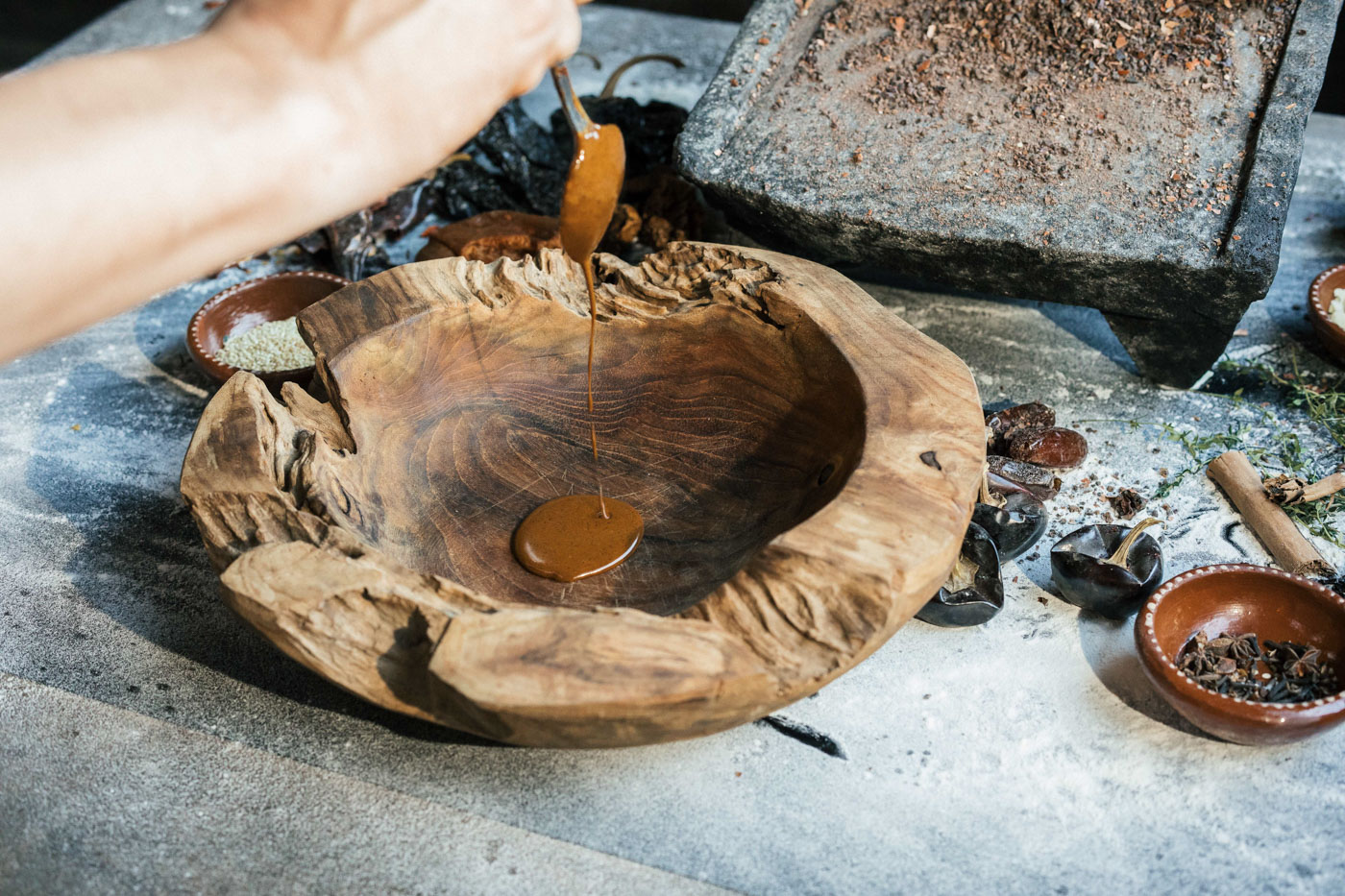
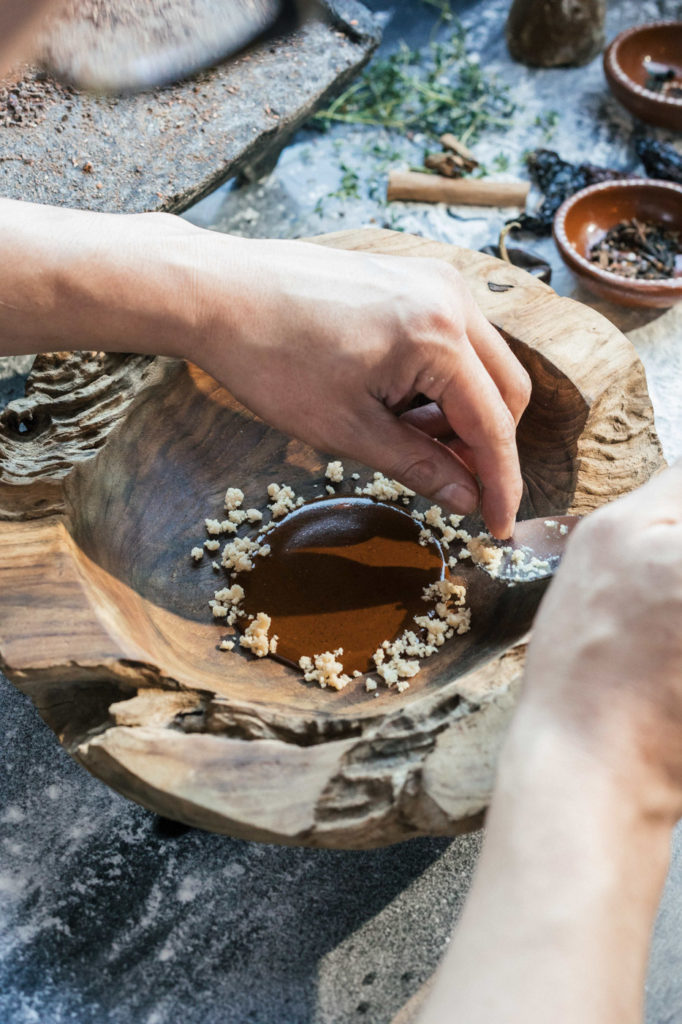
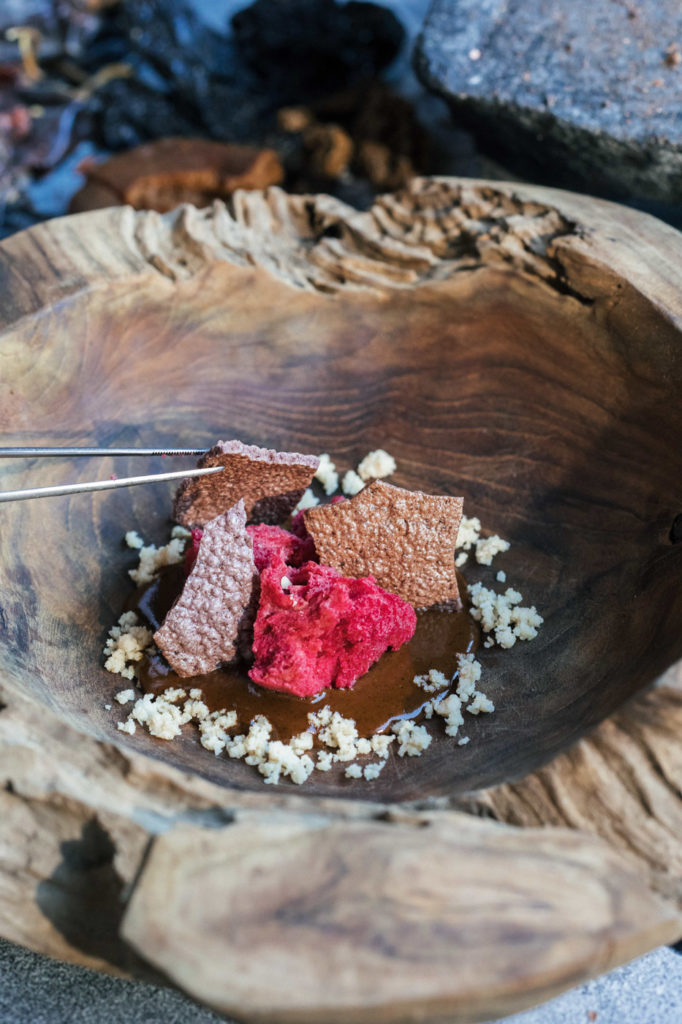
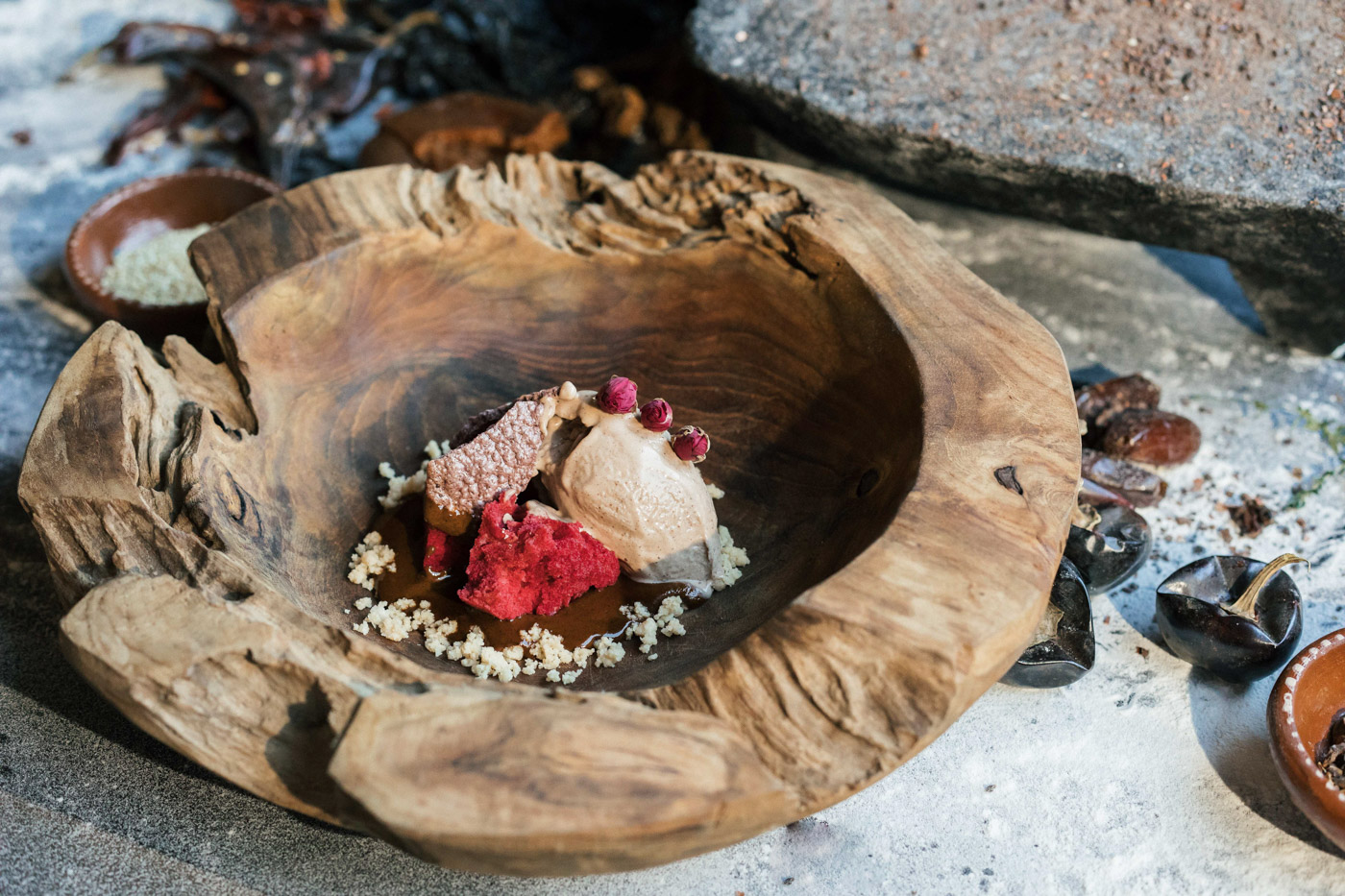
Using technologies invented by the Swiss and Dutch, in 1897 Cadbury’s became the first manufacturer to produce, market and package the milk chocolate bars we’re familiar with today. The sole purveyor to chocoholic Queen Victoria, Cadbury’s packaged its chocolate in the sentimental Victorian style suitable for Valentine’s Day.
Over the course of two and a half centuries, chocolate went from a sacred Mesoamerican drink to a global commodity. The metate was replaced with the food processor, the delectable cocoa butter in the froth replaced with cheap fats. With its mass consumption much controversy has recently ensued over deforestation and even child labor, giving rise to the bean to bar movement with Fair Trade labels that help identify chocolatiers with a conscience. But readily available today in its many incarnations—from candy bars to ice cream to mole—it is hard to imagine life without it. Through conscious shopping, perhaps one can even achieve spiritual transcendence just like the ancient Maya. It is chocolate after all.
——
Special thanks to Chef Ruffo Ibarra for inviting us to his Tijuana restaurant, Oryx Capital, to visually capture the images throughout this story.





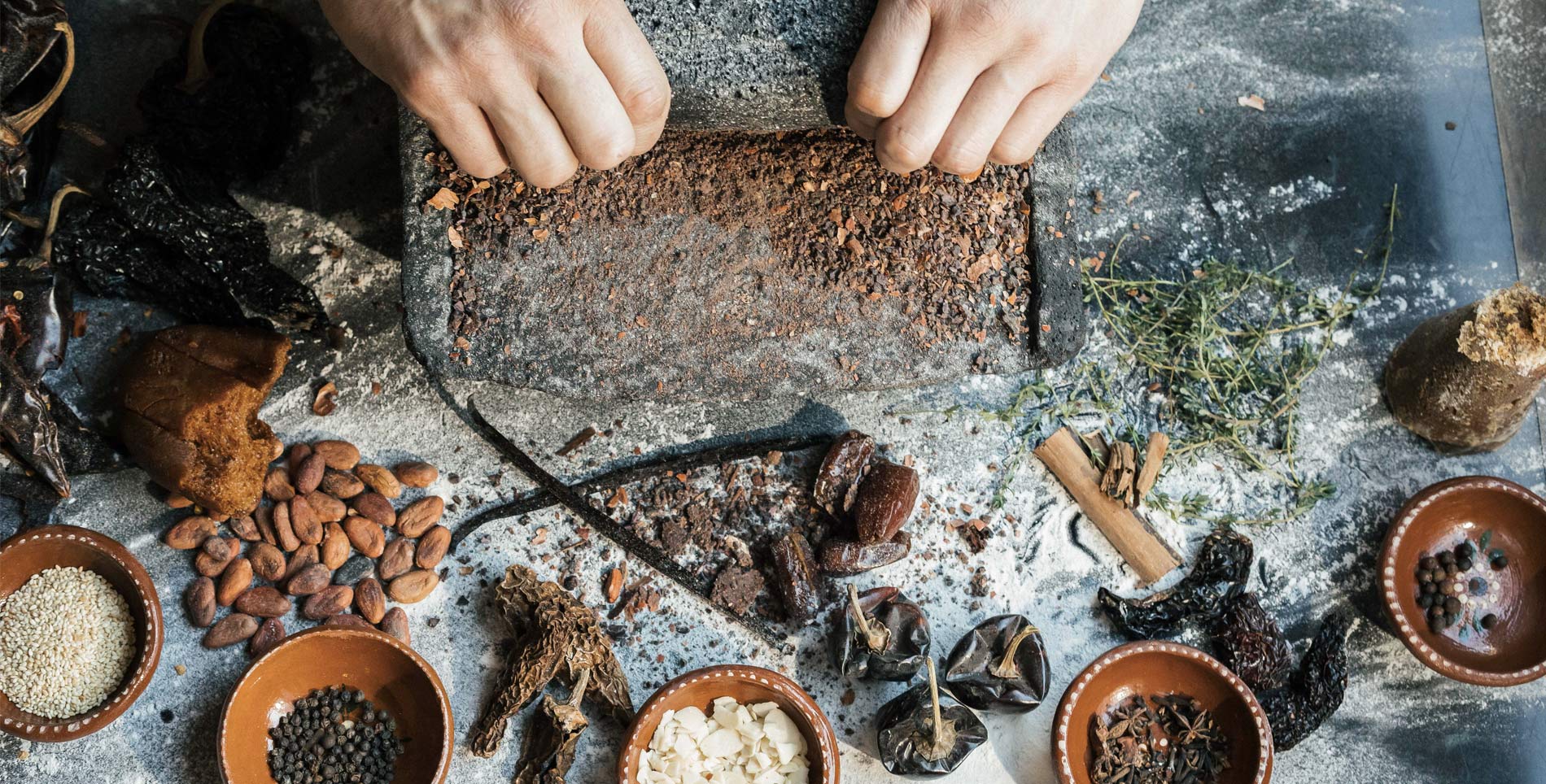

Our comments section is for members only.
Join today to gain exclusive access.